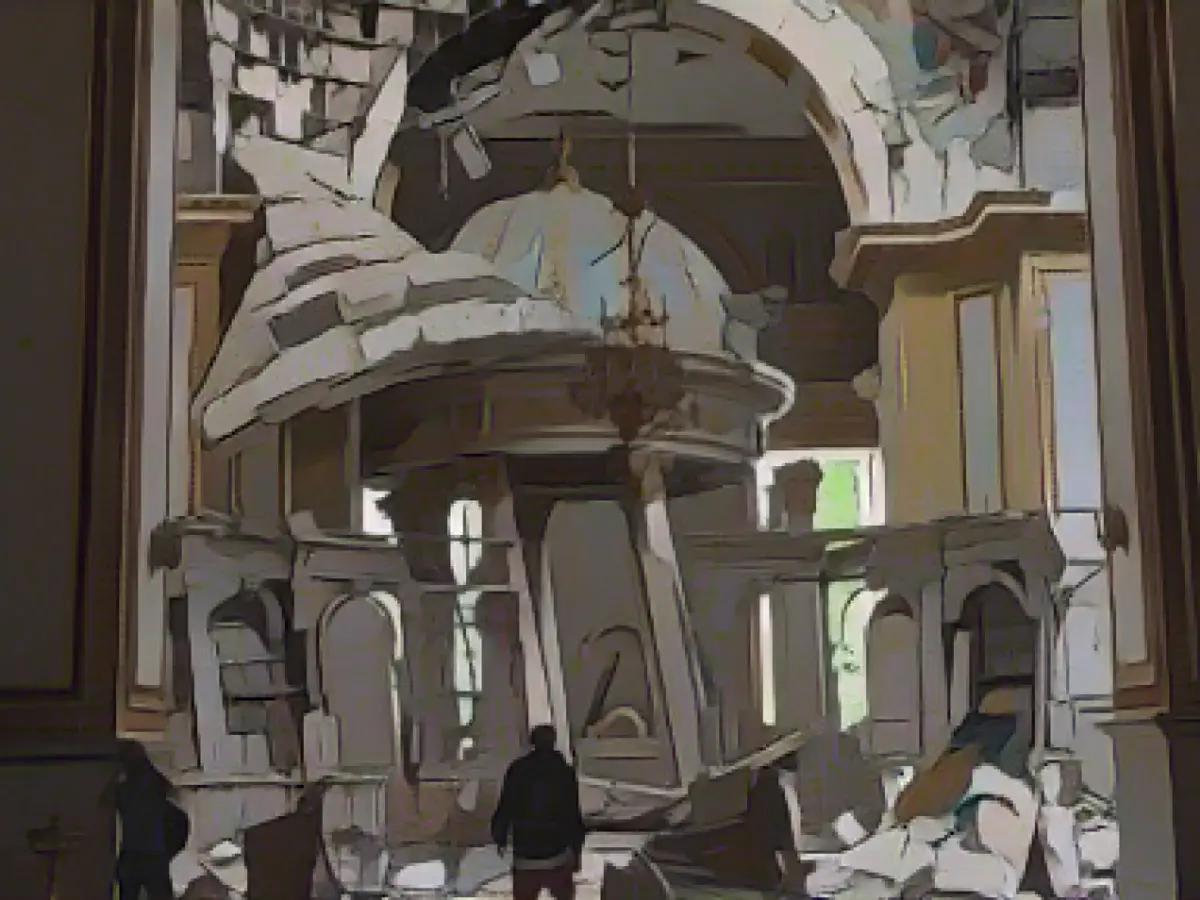Danger looms over Ukraine's cultural heritage as conflict rages on
Ruined facades, collapsed vaults, and shattered artworks – a glimpse into Odessa's Transfiguration Cathedral post-bombing testifies to Russia's relentless war on Ukraine's cultural identity. The Transfiguration Cathedral, a revered Orthodox icon, is among numerous historically significant sites that have been documented by a team led by Germany's German Documentation Center for Art History (DDK) across cities like Kiev, Odessa, and Zaporizhia. This establishment's director, Christian Bracht, shares his dismay over the seemingly endless assault on Ukraine's cultural fabric.
Over the past year, DDK has collaborated with scientists under the guidance of Ina Blümel from the Leibniz Information Center for Science and Technology (TIB) and 17 Ukrainian photographers to document threatened sites. Their joint project serves as a historical precursor to past wars, where culturally significant structures, unfortunately, fell prey to deliberate destruction. Even in the early 20th century, Ukraine bore witness to such damage during both World Wars.
Today, the state of Ukraine's cultural heritage is nothing short of dire, as over 250 buildings face imminent harm. Local photographers have managed to capture and document around 3,700 exterior and interior photographs of these at-risk sites, with the actual count of destroyed ones still unknown. Bracht believes that increased funding and support are crucial to ensuring the project's longevity and accuracy, given the ongoing lack of a clear end to the conflict.
However, the DDK refrains from publicizing the specifics of the endangered sites. Their primary concern involves staving off the potential misuse of information by the aggressor to formulate attack strategy plans. Inufferable circumstances witnessed in Ukraine, from relentless bombardment to routine power outages and internet disruption, make for tenuous working conditions for the team.
The images are meticulously captured with digital cameras and high-end lenses, ensuring top-notch quality throughout the process. Using careful technical checks, the DDK ensures the data's dependability and preservation. Storing and backing up all images and information on the University Computer Center of Marburg's servers guarantees safe long-term storage. In the unfortunate event of a building's complete destruction, the detailed digital documentation will serve as an indispensable starting point for reconstruction, scholarly analyses, and cultural reflection.
The German Open Science Lab at TIB Hanover plays a significant role in the project, harnessing the power of Wikibase, an open-source software tool. Local residents, activists, and amateur photographers are invited to contribute to the project by uploading relevant information, images, and data. Over time, this extensive database will be accessible online as a repository, offering a comprehensive overview of Ukraine's cultural heritage landscape.
In a similar vein, Skeiron, a Ukrainian architectural group, is attempting to document and protect Ukraine's architectural and artistic heritage by generating digital replicas of significant sites. Recognizing the destructive influence of war and time, the group's focus is on safeguarding memories by creating realistic virtual recreations of Ukrainian landmarks. Ten of these interactive models were showcased at an exhibition in Dortmund, Germany, allowing visitors to virtually explore their virtual representations through a QR code-based interface.
The exhibition served to raise worldwide awareness of the threat the Russian invasion poses to Ukrainian cultural heritage as well as European cultural patrimony, as stated by the Baukunstarchiv Nordrhein-Westfalen spokesperson. Whereas the artworks on display remain a testament to the enduring resilience of Ukraine's art scene, they also serve as a stark reminder of the fragility and preciousness of cultural identity during wartime.





